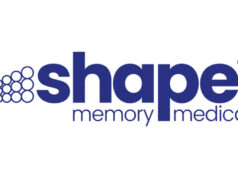
Terumo Aortic today announced enrolment of the first patient in the Fenestrated Treo pivotal investigational device exemption (IDE) study in the USA. This study is designed to evaluate the endovascular repair of juxtarenal and suprarenal aortic aneurysms using the Fenestrated Treo abdominal stent-graft system. Getinge’s investigational iCast covered stent system will be used as a bridging stent in the study.
“Achieving the first enrolment in this FDA-approved IDE is a major milestone that brings us one step closer to making a fenestrated endovascular graft system available to patients in the USA, representing a significant advancement in treating complex abdominal aortic aneurysms (AAA),” Terumo Aortic states in a press release.
The study will include up to 45 sites in the USA. Terumo Aortic anticipates that approximately 210 patients will be enrolled across three study arms, representing juxtarenal aneurysms, suprarenal aneurysms, and patients with chronic kidney disease. Patients will then be followed for five years post procedure.
The first patient was enrolled by J Westley Ohman (Washington University School of Medicine, St Louis, USA).
Benjamin Starnes (Harborview Medical Center, Seattle, USA), the national principal investigator for the study, commented: “The Fenestrated Treo stent-graft system provides a revolutionary technology that is not available with any other endovascular graft in the USA today. I believe this product will become the gold standard for treating juxtarenal and suprarenal aneurysms.”
Jeffrey Mifek, global vice president of clinical and medical affairs at Terumo Aortic, said: “The Fenestrated Treo stent-graft system has now been implanted in more than 1,200 patients outside the USA, and today we are delighted to mark the first implant of this device in our US pivotal study. The US IDE system can be manufactured with up to five fenestrations. This capability expands the options available for tailoring grafts to individual patient anatomies within the US market.”











